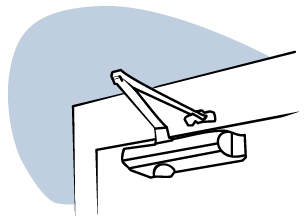In Ultra ESB we use a special hot-swap classloader that allows us to reload Java classes on demand. This allows us to literally hot-swap our deployment units - load, unload, reload with updated classes, and phase-out gracefully - without restarting the JVM.

Windows: supporting the forbidden land
In Ultra ESB Legacy the loader was working fine on Windows, but on the newer X-version it seemed to be having some hiccups. We are not supporting Windows as a target platform, so it didn't matter much - until recently, when we decided to support non-production distros on Windows. (Our enterprise integration IDE UltraStudio runs fine on Windows, so Windows devs, you are all covered.)
![]()
TDD FTW
Fixing the classloader was a breeze, and all tests were passing; but I wanted to back my fixes up with some extra tests, so I wrote a few new ones. Most of these involved creating a new JAR file in a subditrectory under the system temp directory, and using the hot-swap classloader to load different artifacts that were placed inside the JAR. For extra credit on best practices, I also made sure to add some cleanup logic to delete the temp subdirectory via FileUtils.deleteDirectory().
And then, things went nuts.
And the tear-down was no more.
All tests were passing, in both Linux and Windows; but the final tear-down logic was failing in Windows, right at the point where I delete the temp subdirectory.
Being on Windows, I didn't have the luxury of lsof; fortunately, Sysinternals already had just the thing I needed: handle64.
Finding the culprit was pretty easy: hit a breakpoint in tearDown() just before the directory tree deletion call, and run a handle64 {my-jar-name}.jar.
Bummer.
My test Java process, was holding a handle to the test JAR file.
Hunting for the leak
No. Seriously. I didn't.
Naturally, my first suspect was the classloader itself. I spent almost half an hour going over the classloader codebase again and again. No luck. Everything seemed rock solid.
The "leak dumper"; a.k.a my Grim Reaper for file handles
My best shot was to see what piece of code had opened the handler to the JAR file. So I wrote a quick-n-dirty patch to Java's FileInputStream and FilterInputStream that would dump acquire-time stacktrace snapshots; whenever a thread holds a stream open for too long.
This "leak dumper" was partly inspired by our JDBC connection pool that detects unreleased connections (subject to a grace period) and then dumps the stacktrace of the thread that borrowed it - back at the time it was borrowed. (Kudos to Sachini, my former colleague-intern at AdroitLogic.)
The leak, exposed!
Sure enough, the stacktrace revealed the culprit:
id: 174 created: 1570560438355 --filter-- java.io.FilterInputStream.<init>(FilterInputStream.java:13) java.util.zip.InflaterInputStream.<init>(InflaterInputStream.java:81) java.util.zip.ZipFile$ZipFileInflaterInputStream.<init>(ZipFile.java:408) java.util.zip.ZipFile.getInputStream(ZipFile.java:389) java.util.jar.JarFile.getInputStream(JarFile.java:447) sun.net.www.protocol.jar.JarURLConnection.getInputStream(JarURLConnection.java:162) java.net.URL.openStream(URL.java:1045) org.adroitlogic.x.base.util.HotSwapClassLoader.loadSwappableClass(HotSwapClassLoader.java:175) org.adroitlogic.x.base.util.HotSwapClassLoader.loadClass(HotSwapClassLoader.java:110) org.adroitlogic.x.base.util.HotSwapClassLoaderTest.testServiceLoader(HotSwapClassLoaderTest.java:128) sun.reflect.NativeMethodAccessorImpl.invoke0(Native Method) sun.reflect.NativeMethodAccessorImpl.invoke(NativeMethodAccessorImpl.java:62) sun.reflect.DelegatingMethodAccessorImpl.invoke(DelegatingMethodAccessorImpl.java:43) java.lang.reflect.Method.invoke(Method.java:498) org.testng.internal.MethodInvocationHelper.invokeMethod(MethodInvocationHelper.java:86) org.testng.internal.Invoker.invokeMethod(Invoker.java:643) org.testng.internal.Invoker.invokeTestMethod(Invoker.java:820) org.testng.internal.Invoker.invokeTestMethods(Invoker.java:1128) org.testng.internal.TestMethodWorker.invokeTestMethods(TestMethodWorker.java:129) org.testng.internal.TestMethodWorker.run(TestMethodWorker.java:112) org.testng.TestRunner.privateRun(TestRunner.java:782) org.testng.TestRunner.run(TestRunner.java:632) org.testng.SuiteRunner.runTest(SuiteRunner.java:366) org.testng.SuiteRunner.runSequentially(SuiteRunner.java:361) org.testng.SuiteRunner.privateRun(SuiteRunner.java:319) org.testng.SuiteRunner.run(SuiteRunner.java:268) org.testng.SuiteRunnerWorker.runSuite(SuiteRunnerWorker.java:52) org.testng.SuiteRunnerWorker.run(SuiteRunnerWorker.java:86) org.testng.TestNG.runSuitesSequentially(TestNG.java:1244) org.testng.TestNG.runSuitesLocally(TestNG.java:1169) org.testng.TestNG.run(TestNG.java:1064) org.testng.IDEARemoteTestNG.run(IDEARemoteTestNG.java:72) org.testng.RemoteTestNGStarter.main(RemoteTestNGStarter.java:123)
Gotcha!
java.io.FilterInputStream.<init>(FilterInputStream.java:13) ... sun.net.www.protocol.jar.JarURLConnection.getInputStream(JarURLConnection.java:162) java.net.URL.openStream(URL.java:1045) org.adroitlogic.x.base.util.HotSwapClassLoader.loadSwappableClass(HotSwapClassLoader.java:175)
But still, that didn't tell the whole story. If URL.openStream() opens the JAR, why does it not get closed when we return from the try-with-resources block?
try (InputStream is = jarURI.toURL().openStream()) {
byte[] bytes = IOUtils.toByteArray(is);
Class<?> clazz = defineClass(className, bytes, 0, bytes.length);
...
logger.trace(15, "Loaded class {} as a swappable class", className);
return clazz;
} catch (IOException e) {
logger.warn(16, "Class {} located as a swappable class, but couldn't be loaded due to : {}, " +
"trying to load the class as a usual class", className, e.getMessage());
...
}Into the wild: JarURLConnection, URLConnection, and beyond
Thanks to Sun Microsystems who made it OSS, I could browse through the JDK source, right up to this shocking comment - all the way down, in java.net.URLConnection:
private static boolean defaultUseCaches = true;
/**
* If <code>true</code>, the protocol is allowed to use caching
* whenever it can. If <code>false</code>, the protocol must always
* try to get a fresh copy of the object.
* <p>
* This field is set by the <code>setUseCaches</code> method. Its
* value is returned by the <code>getUseCaches</code> method.
* <p>
* Its default value is the value given in the last invocation of the
* <code>setDefaultUseCaches</code> method.
*
* @see java.net.URLConnection#setUseCaches(boolean)
* @see java.net.URLConnection#getUseCaches()
* @see java.net.URLConnection#setDefaultUseCaches(boolean)
*/
protected boolean useCaches = defaultUseCaches;
Yep, Java does cache JAR streams!
From sun.net.www.protocol.jar.JarURLConnection:
class JarURLInputStream extends FilterInputStream {
JarURLInputStream(InputStream var2) {
super(var2);
}
public void close() throws IOException {
try {
super.close();
} finally {
if (!JarURLConnection.this.getUseCaches()) {
JarURLConnection.this.jarFile.close();
}
}
}
}

If (well, because) useCaches is true by default, we're in for a big surprise!
Let Java cache its JARs, but don't break my test!
JAR caching would probably improve performance; but does that mean I should stop cleaning up after - and leave behind stray files after each test?
(Of course I could say file.deleteOnExit(); but since I was dealing with a directory hierarchy, there was no guarantee that things would get deleted in order, and undeleted directories would be left behind.)
So I wanted a way to clean up the JAR cache - or at least purge just my JAR entry; after I am done, but before the JVM shuts down.
Disabling JAR caching altogether - probably not a good idea!
URLConnection does offer an option to avoid caching connection entries:
/**
* Sets the default value of the <code>useCaches</code> field to the
* specified value.
*
* @param defaultusecaches the new value.
* @see #getDefaultUseCaches()
*/
public void setDefaultUseCaches(boolean defaultusecaches) {
defaultUseCaches = defaultusecaches;
}It would have been perfect if caching could be disabled per file/URL, as above; our classloader caches all entries as soon as it opens a JAR, so it never needs to open/read that file again. However, once a JAR is open, caching cannot be disabled on it; so once our classloader has opened the JAR, there's no getting rid of the cached file handle - until the JVM itself shuts down!
URLConnection also allows you to disable caching by default for all subsequent connections:
/**
* Sets the default value of the <code>useCaches</code> field to the
* specified value.
*
* @param defaultusecaches the new value.
* @see #getDefaultUseCaches()
*/
public void setDefaultUseCaches(boolean defaultusecaches) {
defaultUseCaches = defaultusecaches;
}However, if you disable it once, the whole JVM could be affected from that moment onwards - since it probably applies to all URLConnection-based implementations. As I said before, that could hinder performance - not to mention deviating my test from cache-enabled, real-world behavior.
Down the rabbit hole (again!): purging manually from the JarFileFactory
The least-invasive option is to remove my own JAR from the cache, when I know I'm done.
And good news, the cache - sun.net.www.protocol.jar.JarFileFactory - already has a close(JarFile) method that does the job.
But sadly, the cache class is package-private; meaning there's no way to manipulate it from within my test code.
Reflection to the rescue!
Thanks to reflection, all I needed was one little "bridge" that would access and invoke jarFactory.close(jarFile) on behalf of me:
class JarBridge {
static void closeJar(URL url) throws Exception {
// JarFileFactory jarFactory = JarFileFactory.getInstance();
Class<?> jarFactoryClazz = Class.forName("sun.net.www.protocol.jar.JarFileFactory");
Method getInstance = jarFactoryClazz.getMethod("getInstance");
getInstance.setAccessible(true);
Object jarFactory = getInstance.invoke(jarFactoryClazz);
// JarFile jarFile = jarFactory.get(url);
Method get = jarFactoryClazz.getMethod("get", URL.class);
get.setAccessible(true);
Object jarFile = get.invoke(jarFactory, url);
// jarFactory.close(jarFile);
Method close = jarFactoryClazz.getMethod("close", JarFile.class);
close.setAccessible(true);
//noinspection JavaReflectionInvocation
close.invoke(jarFactory, jarFile);
// jarFile.close();
((JarFile) jarFile).close();
}
}And in my test, I just have to say:
JarBridge.closeJar(jarPath.toUri().toURL());
Right before deleting the temp directory.

So, what's the take-away?
Nothing much for you, if you are not directly dealing with JAR files; but if you are, you might run into this kind of obscure "file in use" errors. (That would hold true for other URLConnection-based streams as well.)
If you happen to be as (un)lucky as I was, just recall that some notorious blogger had written some hacky "leak dumper" patch JAR that would show you exactly where your JAR (or non-JAR) leak is.
Adieu!


